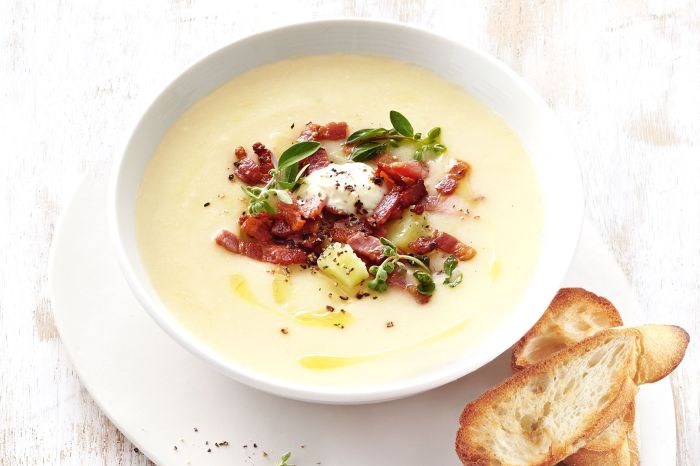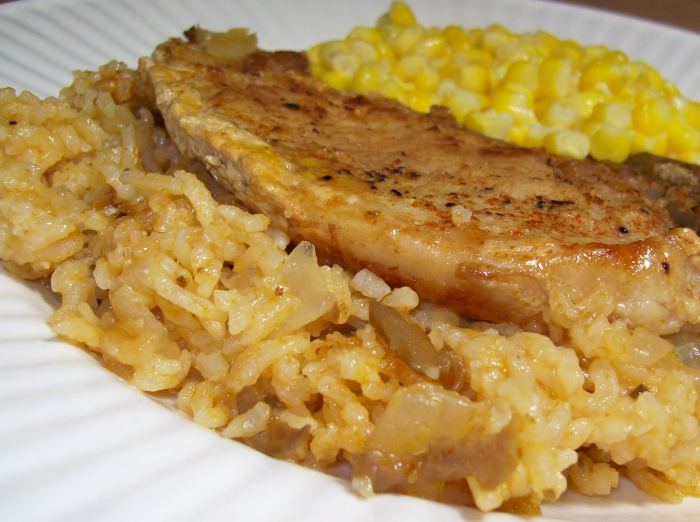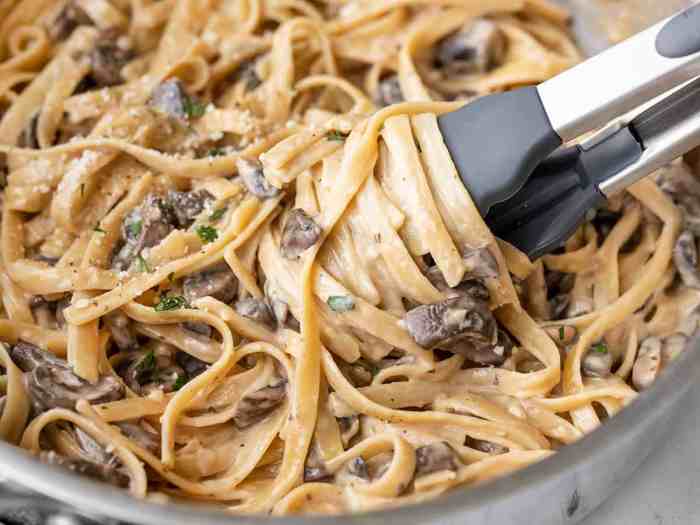Understanding Pho Soup Base Ingredients
Pho soup base recipe – The foundation of a delicious pho lies in its rich and flavorful broth. Understanding the key ingredients and their roles is crucial to achieving the authentic taste of this beloved Vietnamese soup. This section will explore the essential components of a traditional pho broth, compare different types, and offer substitutions for those seeking variations.
Essential Pho Broth Ingredients and Their Roles
A traditional pho broth typically relies on a combination of aromatics, spices, and protein-rich elements to create its signature taste. The specific ingredients and their proportions can vary depending on regional preferences and individual recipes, but some staples remain consistent.
| Ingredient | Quantity (approximate) | Function | Substitutions |
|---|---|---|---|
| Beef bones (shank, oxtail) | 2-3 lbs | Provides richness, body, and collagen | Chicken bones, pork bones, vegetable broth |
| Onion, charred | 1 large | Adds depth and sweetness; mellows the richness | Ginger, garlic |
| Ginger | 2-3 inches | Adds warmth and slight spiciness | Galangal |
| Star anise | 2-3 | Provides licorice-like sweetness and aroma | Anise seeds |
| Cinnamon stick | 1 | Adds warmth and subtle sweetness | Cassia bark |
| Cloves | 3-4 | Adds warmth and pungency | Allspice berries |
| Fish sauce | 2-3 tbsp | Adds umami and salinity | Soy sauce (adjust amount) |
| Rock sugar or brown sugar | 1-2 tbsp | Balances savory flavors with sweetness | Honey (use sparingly) |
Comparing Different Pho Broth Types
While beef pho is the most common, variations exist using chicken or vegetarian bases. Beef broth offers a deep, savory richness, while chicken broth provides a lighter, more delicate flavor. Vegetarian broths often rely on mushrooms, kombu, and other umami-rich vegetables to achieve depth.
Preparing the Pho Soup Base: Techniques and Methods
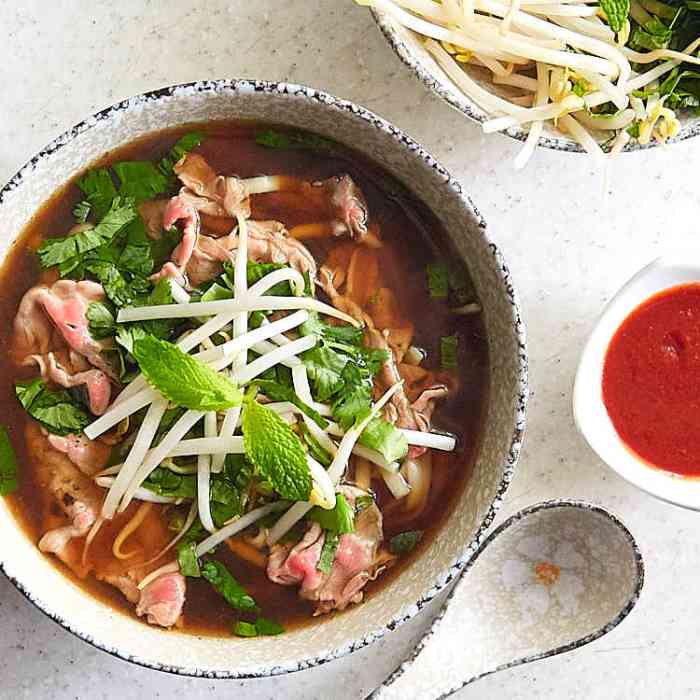
Source: cravingtasty.com
Creating a rich and flavorful pho broth requires patience and attention to detail. The following steps Artikel the process for a classic beef pho broth, highlighting the importance of simmering time and temperature. Alternative methods using pre-made stocks are also discussed.
Step-by-Step Beef Pho Broth Preparation, Pho soup base recipe
- Roast beef bones in a preheated oven (400°F/200°C) for 30 minutes to enhance flavor.
- In a large stockpot, combine roasted bones, charred onion, ginger, star anise, cinnamon stick, cloves, and enough water to cover generously.
- Bring the mixture to a boil, then reduce heat to a gentle simmer. Skim off any foam or impurities that rise to the surface.
- Simmer for at least 6 hours, or up to 12 hours for a richer broth. Maintain a low simmer to prevent boiling over.
- After simmering, strain the broth through a fine-mesh sieve or cheesecloth, discarding the solids.
- Season the broth with fish sauce and rock sugar to taste.
Achieving a Clear and Flavorful Broth
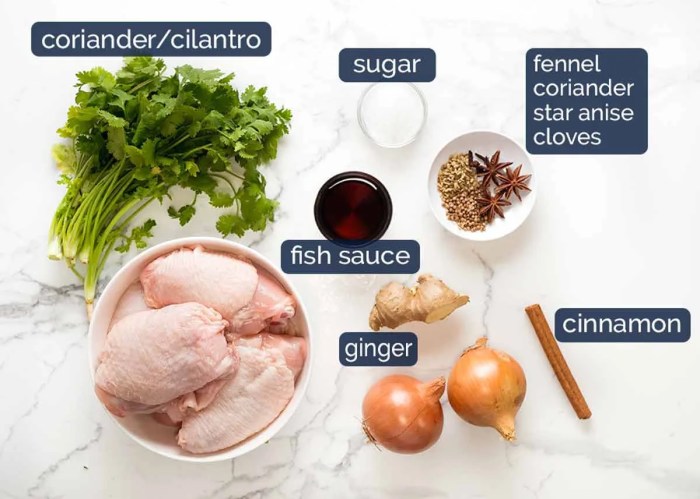
Source: recipetineats.com
A clear broth is a hallmark of a well-made pho. To achieve clarity, ensure the simmer is gentle and skim off any foam regularly. Avoid over-boiling, which can make the broth cloudy. A long simmering time allows the flavors to meld and deepen.
Quick Pho Broth using Pre-made Stocks
For a quicker alternative, high-quality beef or chicken stock can be used as a base. Simply combine the stock with the aromatics and spices listed above, simmer for 1-2 hours to allow the flavors to blend, and season to taste.
Variations and Flavor Profiles of Pho Soup Base
The basic pho broth recipe can be adapted to create a wide array of flavor profiles, incorporating different spices and aromatics to suit individual preferences. This section will explore some popular variations and introduce a unique recipe.
Diverse Pho Broth Flavor Profiles
- Classic Beef Pho: Rich, savory, slightly sweet, with hints of licorice and cinnamon.
- Spicy Pho: Classic beef broth enhanced with chili peppers, either fresh or dried, for a fiery kick.
- Herbal Pho: Incorporates fresh herbs like cilantro, basil, and mint for a brighter, more aromatic broth.
- Sweet Pho: Uses a higher proportion of rock sugar or other sweeteners to create a more pronounced sweetness, often paired with other spices.
Unique Pho Broth Variation: Lemongrass and Galangal Pho
This variation incorporates lemongrass and galangal for a distinctly Southeast Asian twist. The lemongrass adds a citrusy aroma and subtle sweetness, while the galangal provides a warm, slightly peppery flavor. The combination creates a fragrant and complex broth that complements the traditional pho flavors.
Visual Guide to Pho Soup Base Preparation
Observing the visual changes in the broth during preparation provides valuable insights into the cooking process. This section will detail the appearance of the broth at different stages.
Crafting a delicious pho soup base requires careful attention to simmering times and ingredient ratios. For a richer, more complex flavor profile, consider incorporating elements found in other Asian noodle soups, such as the aromatics featured in a mami soup recipe. Understanding the nuances of mami’s broth can inform your approach to pho, enriching the overall depth and complexity of your final pho soup base.
Visual Characteristics of Pho Broth
Initially, the broth will appear somewhat murky, with the roasted bones imparting a dark brown color. As the broth simmers, the color will gradually deepen and clarify, becoming a rich amber hue. A well-made pho broth should be translucent, with a rich, deep color, and a pleasant aroma. The texture should be smooth and not greasy.
Troubleshooting Common Pho Soup Base Issues: Pho Soup Base Recipe
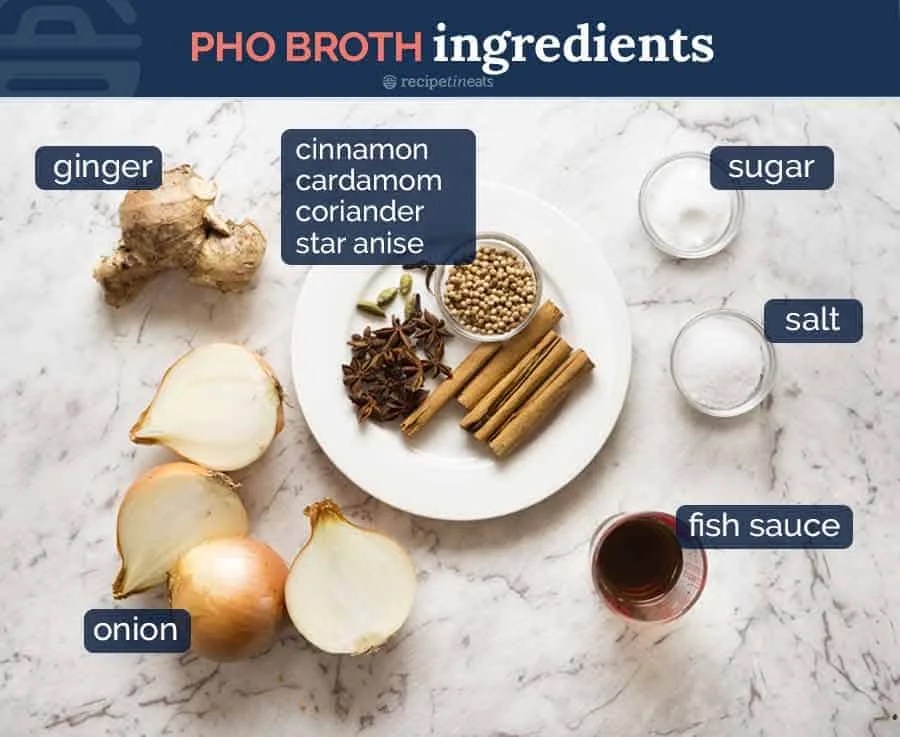
Source: recipetineats.com
Despite careful preparation, some issues can arise during pho broth preparation. This section will address common problems and their solutions.
Common Pho Broth Problems and Solutions
| Problem | Cause | Solution |
|---|---|---|
| Cloudy broth | Over-boiling, not skimming impurities | Simmer gently, skim regularly, strain carefully |
| Overpowering flavors | Too much of a single spice or ingredient | Adjust seasoning carefully, use spices sparingly |
| Weak flavor | Insufficient simmering time, low-quality ingredients | Simmer longer, use high-quality ingredients |
Question & Answer Hub
Can I use pre-made broth as a shortcut?
Yes, you can use pre-made beef or chicken broth as a base, but be mindful that the flavor will be less complex than a broth made from scratch. Adjust seasoning accordingly.
How long can I store leftover pho broth?
Store leftover pho broth in an airtight container in the refrigerator for up to 3-4 days. It can also be frozen for longer storage.
What if my broth is too salty?
Add a peeled and halved potato to the simmering broth for 15-20 minutes. The potato will absorb excess salt.
Why is my broth cloudy?
Cloudy broth is often caused by rapid boiling or not skimming off impurities during simmering. Slow simmering and careful skimming are key to clarity.

